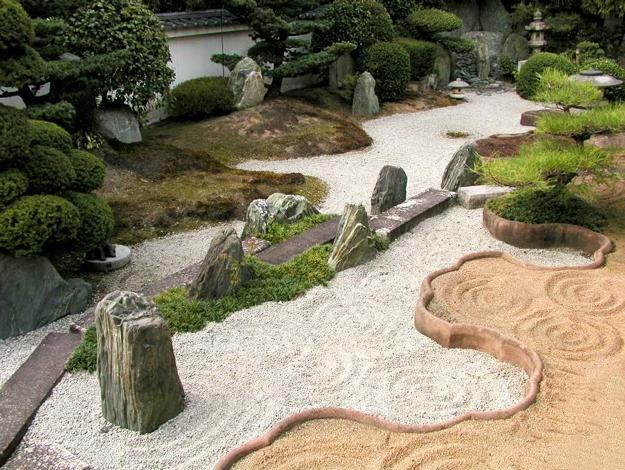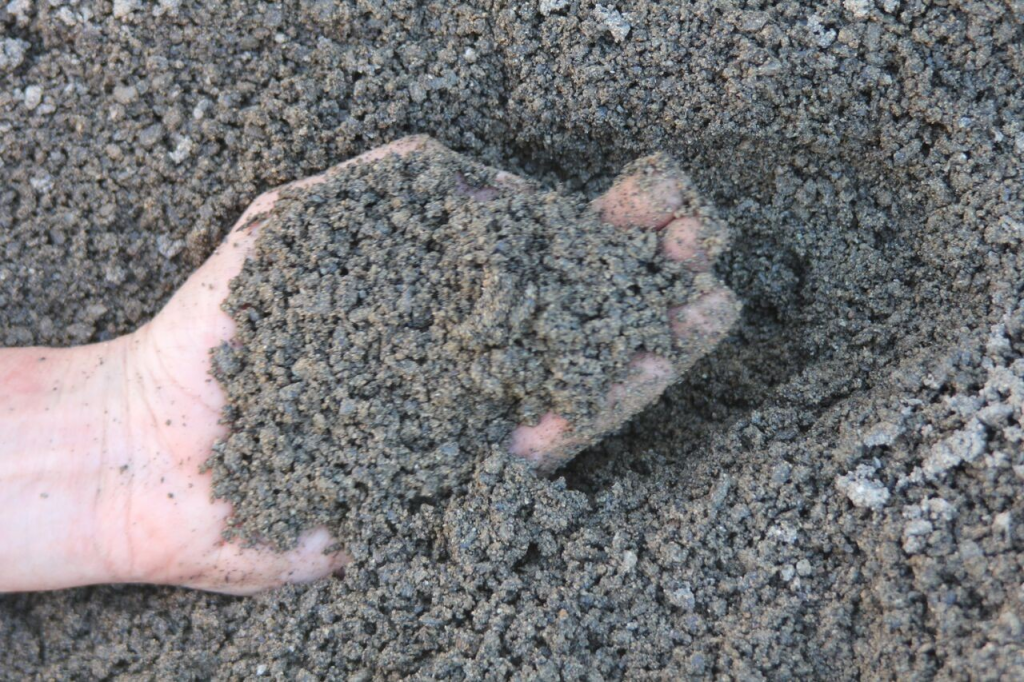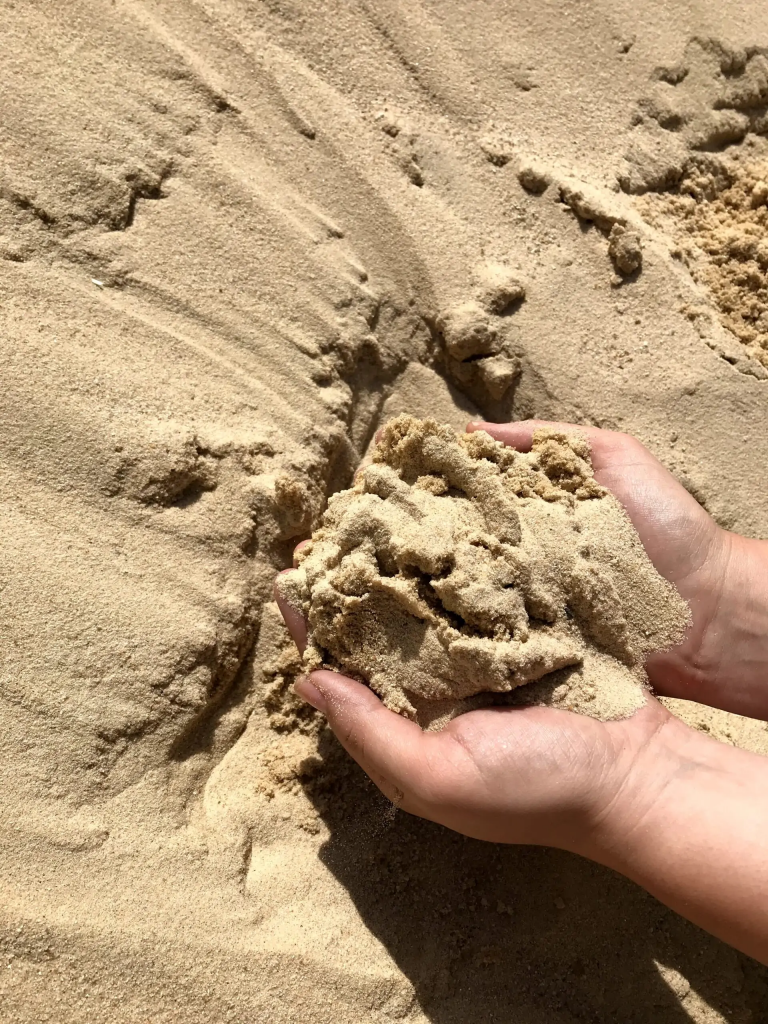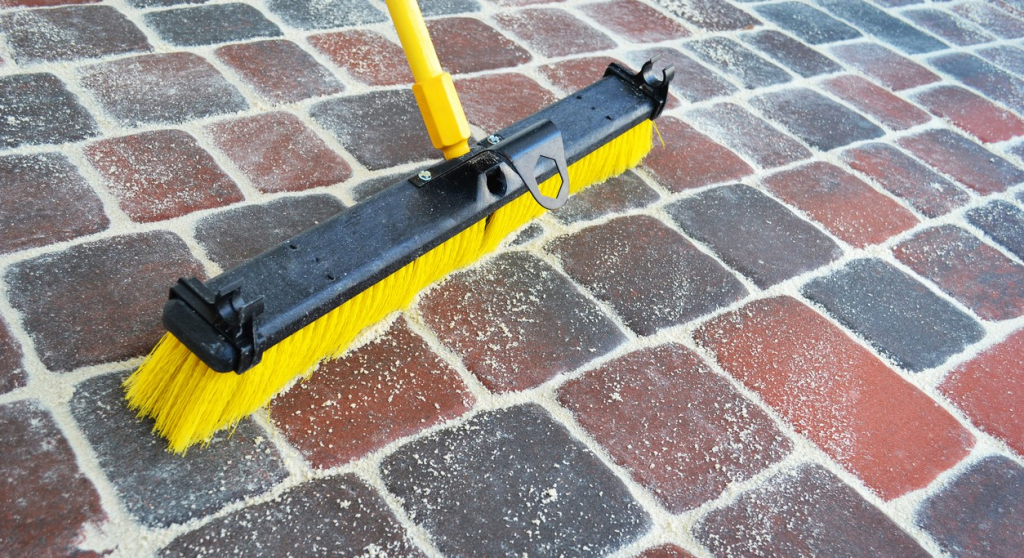
Now typically, landscaping with sand would never come to mind when thinking about spicing up your backyard, however, once you realize all the cool unique things you can do with sand and your yard, you’ll never look back!
The Benefits of Landscaping with Sand
- They make excellent bases
- They are wonderful accents
- Great alternative to grass
- They are inexpensive and last in storage
- Speeds Germination
- Easy to dig up
- Establish air pockets
6 Types of Sand for Landscaping
1. Utility Sand
Also referred to as fill sand, this landscaping sand is a blend of several contrasting colors of sand particles. It’s meant to feel coarse and bristly as it is usually placed under paving stones to be a foundational material for concrete and asphalt.
Other times, utility sand will be used to fill holes, gaps or trenches. Utility sand is essential for landscaping projects due to its compaction quality. And while it is not meant to be used in comfort or play areas where people may be barefoot due to its rough feel, there is no doubt that this type of landscaping sand will serve a variety of needs throughout your yard.
2. Beach Sand

Also referred to as sandbox sand, you’ll probably recognize this sand from trips to the beach. Often, you’ll find this sand in many places that are meant to played in or walked in comfortably while barefoot such as volleyball courts, playgrounds, and sandboxes.
Beach sand has no silica making it completely safe to walk on barefoot. This landscaping sand can be used to add an element of entertainment into your landscape.
3. Concrete Sand
Typically used to compliment the landscape as a base layer for patios, walkways, and pools. Its a mixture of cement and sand, making it mesh well with any variety of paving or hardscape materials.
4. Mason Sand
Also called masonry sand , its generally used in places with concrete applications. This landscaping sand will provide a cleaner, artistic look to your yard.
Mason sand is usually a brighter color ranging from beige to light gray making it a perfect compliment to outdoor driveways, patios, and even garden paths.
5. White Sand
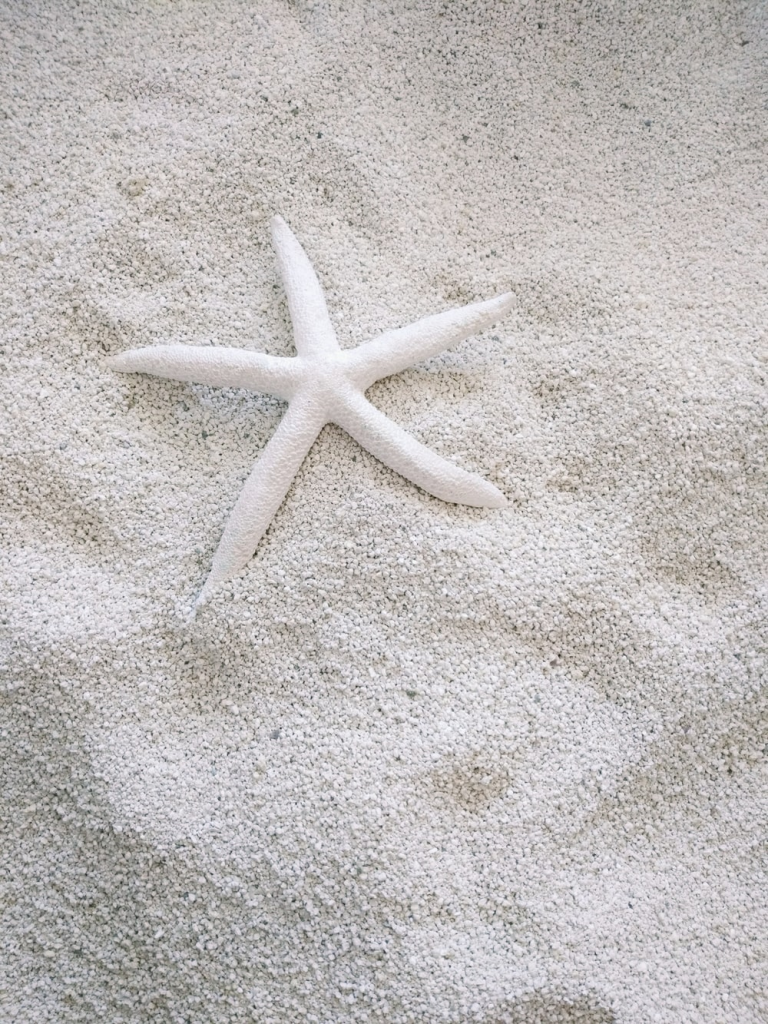
A lot like beach sand, you’ll find this landscaping sand throughout the worlds beaches. Also like beach sand, its used for playful areas like sandboxes or volleyball courts.
However, one difference is that the white sand particles, unlike other landscaping sands, feel the same across every particle. Usually in other sands the particle texture and size will vary, but every white sand grain is the same making it much easier to landscape with and more comfortable to walk on.
6. Polymeric Sand
Polymeric sand is more of a sand compound rather than one specific type. Polymeric sand is mainly used for masonry work for things like paving patios and retaining walls.
Polymeric sand is composed of granules that when mixed with water activate adhesive additives that are applied to concrete to form a solid filler.
13 Sand Landscaping Ideas
1. Beach Theme
Creating a beach themed landscaping feature with beach sand is an excellent, fun way to increase visual interest in your yard. Here are some tips and important things to keep in mind to start:
- First, you’ll start with gathering the necessary supplies. You’ll need things like sand and shells, or anything you may find that is beach related. At your local yard/home care store you’ll be able to find all the bags of sand you may need or you could even go right out to the beach and collect it yourself. Now, if you do decide to collect the sand yourself you’ll want to make sure to sift it before putting any in your yard to remove all the unnatural contents.
- If you happen to find shells, you’ll want to clean those too. To clean, simply soak them in water and bleach for 15 minutes. After, be sure to rinse them off well, and let them air dry.
- Now that you have the supplies, its time for the fun part, the creating of your yard!
- One last thing to keep in mind is landscaping with sand can at times get very chaotic and messy. You’ll want to make sure you have a hose available at all times in order to wash off the mud. Other than that, have fun and get creative!
2. Zen Garden
One of the most popular ways to use landscaping with sand in your yard sand is to create a Zen Garden. Zen Gardens are very simple to put together and they also depict a calmer atmosphere. Here are some tips on getting started:
- To start, Pick an area in your yard with plenty of sunlight.
- Mark off the area using strings or stakes.
- Clear the chosen area by removing all of the grass and weeds.
- Now that the area is clear, you can get started on the actual zen garden by adding sand!
In order to capture the traditional zen garden look, you’ll want to rake the sand in swirls or any pattern you may find amusing. For an even more balanced look, you can add rocks or stepping stones throughout the area. Once you are satisfied, its time enjoy!
3. Sand Play Area
Looking to get the kids out of the house? Why not build them a sandbox! Sandboxes are very simple to construct and, they can be easily customized to match any look no matter how your yard is set up.
Here’s how to build a simple, standard sandbox.
- First, you’ll want to choose a location, ideally you should look for a spot in the yard that has level ground and that gets plenty of sun. But, if you have younger children you’ll also want to consider a spot close to a window near the house so you can watch them while they play.
- In the chosen area, dig down about 6 inches. However, if you have soil heavy clay soil, you may want to dig further to about 8 or 10 inches in order to avoid waterlogging.
- In order to avoid weeds growing up trough the sand, a fabric or landscaping tarp should be laid over the excavation site.
- Now, every good sandbox needs some sand, filling the box with play sand would be the most ideal, however, you can also use sand bought from your local yard care store.
- Finally, just add some shovels, trucks, or whatever your child may enjoy and let their imaginations run wild!
4. Dry Sand Riverbed
Looking for a fun way to create a more unique look to your yard? Why not try to make a dry riverbed? Your yard will be visually appealing and textured as well as erosion-proof. Here’s how to get started:
- First, choose a location that gets good sun and has well-drained soil for your riverbed.
- Next, you’ll want to dig a trench down about 6-12 inches. Try to dig the trench as natural as possible and don’t worry about making it all symmetrical because it won’t look as natural
- Cover the area with some type of carpeting or landscaping fabric in order to prevent erosion.
- Now, you can fill the trench with sand with however much sand you would like. Also, you can add some little pebbles or rocks to enhance interest.
- Now that the trench is filled, you’ll want to compact the sand so it doesn’t wash away during storms, simply just pour water onto the land and let it drain away.
- Finally, place drought-tolerant plants throughout the space, succulents, cacti, and sedums are all great choices.
And that’s all there is to it! Your yard can be transformed with a little effort into a beautiful and unique landscaping feature.
5. Sandy Rock Garden
Another popular way to landscape with sand is to use it to contrast different types of rocks and make a whole rock garden. Using a variety of types of rocks and sizes along with different colors and textures of sand will allow for a creative, unique garden.
6. Desert Inspired Theme
In mild climates or along the coast, sand is the natural choice when it comes to landscaping, As it does not require chemical fertilizers and minimal watering, it ensures that the environment is protected. Seaside gardens also benefit from desert-style planting.
The red desert rose is a highly recommended flower used in sand landscaping because, though there are many drought-tolerant plants, its easily the most eye-catching. Most tropical and warmer climates (USDA zones 11 and 12) grow it year-round as an ornamental plant, whereas cooler climates cultivate it indoors.
Cacti and succulents such as spiky aloe vera can also thrive in sand. It is possible to get this look even if you don’t live in a warm climate by planting them in sand-filled containers during the summer, then bringing them inside when it gets cooler.
7. White Sand for a Cleaner Look
If you want achieve a modern look with your yard, the best way to do that is to use white sand. This contemporary look is perfect for low maintenance landscaping with a few key planting ideas added to the mix.
Try to keep it simple by not choosing more than one or two colors to plant around the crisp white sand with. In contrast to the bold shapes of the white walls, this piece will make a big statement. The best plants for edging are those that are capable of settling into sandy soil, such as low-growing purple periwinkles and silvery Helichrysums.
8. Sandy Path
One of the best ways to improve your yard even if you’re on a budget. Adding sand pathways to throughout your yard is as easy, as it is comfortable. Sand represents water in Japanese gardens. Making your path meandering will create an impression of a stream flowing between shrubs and flowers.
When deciding what plants should edge your pathway, think about plants love dry-soil because they will add a more natural look to your pathway.
So, when wanting to try landscaping with sand, definitely consider adding sandy pathways to your as it is one of the simplest and most affordable options when landscaping with sand.
9. Seaside Garden
When looking for the perfect way to make a vacation in your yard while landscaping with sand, try a seaside garden. With its seashore-style inspiration and pretty flowers mixed with sandy pockets, grasses, and driftwood, this garden offers a relaxing retreat for all of your senses.
In order to achieve a similar look, search for grasses like Ammophila arenaria, Stipa tenuissima, and Stipa gigantea. If you’re looking to add splashes of color, plant Silene uniflora, sea campion and sea thrift in cracks and crevices.
10. Surround oversized planters with sand
Even a small amount of sand can really lighten the look of your yard. Try to incorporate sand into a patio or flowerbed as an accent. You can then plant grasses in a lush container garden along with a mixed selection of flowering perennials. This idea is probably the easiest way to get a taste for the landscaping with sand trend without any difficult work.
11. Eco landscaping project
By designing a sustainable garden, we conserve natural resources and reduce our impact on the environment. Hence, sand has more practical uses than merely being a decorative element in landscaping. Rainwater and natural organisms can penetrate the soil beneath if applied in the correct proportion, improving the drainage in your garden. In addition, it proves that sand can also be a good edging material for your garden.
Water-saving methods are essential to sustainable gardening at a time when natural resources are becoming more and more scarce. This unique garden irrigation design uses upended glass bottles to line channels and water plants. Also, it really demonstrates how sand can be a really innovative material for edging your garden as well.
Designed by creative New Zealand landscaper Bayley LuuTomes, it includes an outdoor shower (not seen) that feeds the bottle irrigation system, reinforcing the design’s strong eco slant.
In between the sand and gravel landscaping tiers, flowering blue thyme pockets help blur the lines for a natural unstructured appearance, complemented by Phormium plants native to Bayley’s native New Zealand.
12. Cactus Garden
Adding cactus and sand to your landscaping is a great idea if you live in a mild climate. Not only would a cactus garden make sense for warmer climate places, but it’s also very easy to put together. This desert design is completed with artfully arranged rocks and spiky agaves that lend sculptural shapes.
For a striking and different look, scatter cacti throughout your existing flowering perennials or shrubs. If used as specimen plants or silhouetted against a wall, taller columnar cacti will also look stunning.
13. Add to Geometric Garden with sand
Edging garden pathways with spacious boundaries of lavender is a very well known hack that garden creators love. In order to achieve a much softer, airy look, instead of using gravel or paving stones, use sand. If you want to feel like you’ve been teleported to a Mediterranean Garden when you step into your backyard, add sand to your paths while landscaping with lavender.
The paths in this Normandy garden are landscaped with river sand. Moreover, the softer lines of the topiary planting contrast beautifully with the geometric layout.
As you can probably guess, river sand can be found in rivers, typically collected from beds and banks of them. When landscaping with sand, the result will be a much smoother, aesthetically pleasing look to your yard.
Is sand good for landscaping?
Sand creates pockets of air, increasing aeration, drainage and generally loosening up the soil. This is especially helpful for plants with fine roots. If you’re looking for ways of landscaping with evergreens or landscaping with flowers, be sure to factor in what works with sand too.
Can you use sand instead of mulch?
Sand is actually more recommended than mulch due to its benefits. The sand can be used to suppress weeds from growing more effectively than mulch all while being much more affordable.
When used as a mulch, sand improves the decorative style of the garden by contrasting the green and white together. Sand mulching is also a great way to protect your plant topsoil from loss of and common lawn pests.
Can you use sand in landscaping with rock?
Yes, landscaping with sand and rock is a great way to contrast things like walkways and patio pavers. The sand can also form a sturdy foundation for things like ponds, planters, or steps.
Final Thoughts
In reality, you can do whatever you want when landscaping with sand. It can compliment a yard you may have already established, or it can serve as its own whole theme.
Landscaping with sand really allows you to broaden your options with your landscaping.

